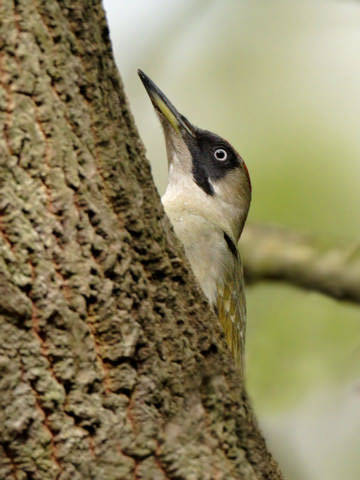
Green Woodpecker © Steve Round
Green Woodpeckers were found in winter in only 148 tetrads, 66 fewer than in the breeding season. The areas with birds missing in winter were widespread across the county, but there were obviously fewer in SJ44, SJ96 and SJ98. Most of the records were of solitary individuals: there were two counts of 3 birds, 13 of 2 birds together and 194 of single birds, many of them heard calling.
There is virtually no difference in any of the categories of habitat recorded in winter from the breeding season. They mostly forage on the ground, with adult ants, and their eggs and larvae, remaining a key part of this species’ specialised diet all year round, explaining their susceptibility to spells of freezing weather. In 1967, Bell wrote that ‘no species has been slower to recover from the exceptional frost of early 1963’ (Bell 1967). He had earlier stated that Green Woodpeckers were much commoner in south and central areas than in the north of the county (Bell 1962), no longer true today, but ‘its chief stronghold remains in Delamere and surrounding areas where it has always been regarded as abundant’. The present winter Atlas map shows that the largest contiguous group of tetrads is in exactly that part of the centre of Cheshire.
In the Wirral, the species’ status has changed markedly. In Coward’s time a century ago, it was rare there. Hardy (1941) knew Green Woodpeckers as occasional winter visitors to Wirral and Bell (1962) wrote that they had noticeably increased during the last 15 to 20 years. Nowadays, at both seasons, they are widely distributed on the peninsula.
Sponsored by Dr Paul Brewster and Dr Carys Brewster

